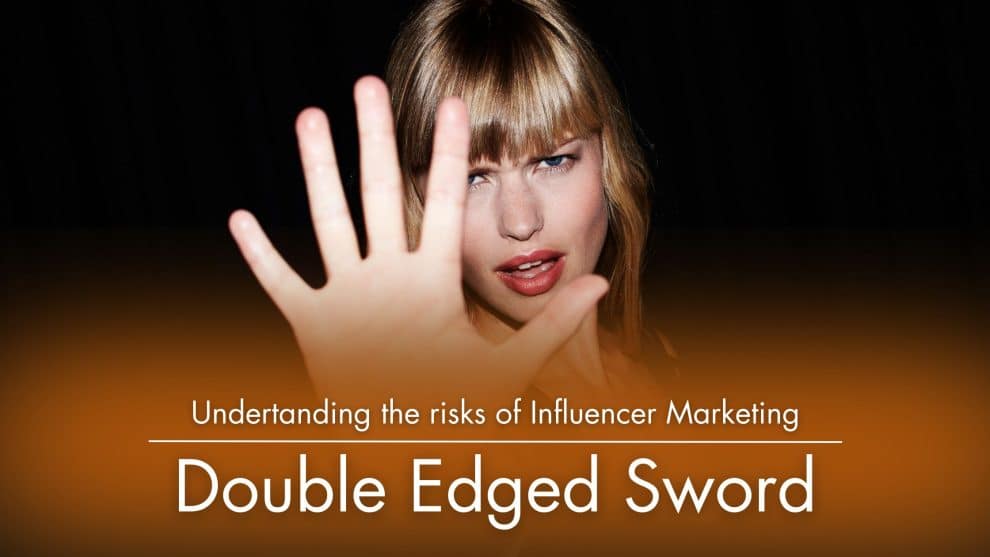Understanding the Risks of Influencer Marketing
Influencer marketing has grown to become an integral part of many companies’ digital marketing strategies. While it has proven to deliver significant benefits, such as increased brand awareness, enhanced customer loyalty, and improved sales, it can also be a double-edged sword. If not carefully managed, influencer marketing can damage a brand’s reputation and negatively impact its business. Understanding these potential pitfalls is the first step towards mitigating the risks associated with influencer marketing.
Inauthentic Content and Loss of Trust
One of the primary risks of influencer marketing is the creation of inauthentic content. If an influencer’s endorsement of a product or service comes off as overly promotional or insincere, it can lead to a loss of trust among their followers. Trust is a fundamental aspect of the relationship between influencers and their audience. If that trust is breached, it can damage not only the influencer’s reputation but also the brand they’re promoting.
Misalignment with Brand Values and Identity
An influencer who does not align with a brand’s values and identity can also cause damage. If an influencer’s personal beliefs, actions, or content contradict a brand’s values, it can lead to negative perceptions about the brand. This misalignment can result in consumer backlash, negative publicity, and damage to the brand’s reputation.
Influencer Scandals and Controversies
Associating with an influencer who becomes embroiled in a scandal or controversy is another risk. Negative news about an influencer can quickly spread on social media, potentially tarnishing the brand they are associated with. Even if the controversy is unrelated to the brand, the negative association can be damaging.
Ineffectiveness and Negative ROI
Finally, influencer marketing can lead to ineffective campaigns and negative return on investment (ROI). If an influencer fails to engage their audience effectively or if their audience is not the right fit for a brand’s product or service, the campaign may not deliver the desired results. This can result in wasted resources and a negative impact on the brand’s business performance.
Preventing Damage to Your Brand through Influencer Marketing
While these potential pitfalls can cause harm, they should not deter brands from leveraging the power of influencer marketing. Instead, they highlight the importance of careful planning, selection, and management of influencer marketing campaigns. Here are some ways to mitigate these risks:
- Choose the Right Influencers: Look for influencers whose values align with your brand and who are genuinely interested in your product or service. Authenticity is crucial in influencer marketing, and an influencer who genuinely likes your brand is more likely to create authentic content.
- Establish Clear Expectations: Make sure influencers understand what your brand expects from the partnership. Clear guidelines regarding content creation, brand messaging, and disclosure of the partnership can help ensure the campaign’s success.
- Monitor Your Influencers: Keep a close eye on your influencers’ activities, both related and unrelated to your campaign. Be ready to respond swiftly and appropriately if an influencer becomes involved in a controversy.
- Measure Your Campaign’s Performance: Track your campaign’s performance to ensure it is delivering the desired results. Use key performance indicators (KPIs) such as engagement rates, conversion rates, and ROI to evaluate your campaign’s effectiveness.
The Do’s and Don’ts of Influencer Marketing: Preventing Brand Damage
While the risks of influencer marketing can cause considerable harm, they should not discourage brands from capitalizing on the power of influencers. They should rather be seen as cautionary tales underlining the importance of strategic planning, meticulous influencer selection, and effective campaign management. Here are some do’s and don’ts of influencer marketing to mitigate these risks:
Do: Choose the Right Influencers
Opt for influencers whose values resonate with your brand and who have a genuine interest in your offerings. Authenticity is crucial in influencer marketing, and influencers who truly appreciate your brand are more likely to generate authentic content.
Don’t: Neglect Clear Expectations
Ensure influencers understand what your brand expects from the partnership. Establish clear guidelines about content creation, brand messaging, and partnership disclosure for successful campaign execution.
Do: Monitor Your Influencers
Keep an eye on your influencers’ activities, both related and unrelated to your campaign. Be prepared to respond appropriately and promptly if an influencer becomes embroiled in a controversy.
Don’t: Ignore Performance Measurement
Track your campaign’s performance diligently to ensure it’s delivering the desired results. Use key performance indicators (KPIs) such as engagement rates, conversion rates, and ROI to evaluate your campaign’s effectiveness.
Do: Encourage Authenticity
Encouraging authenticity in content creation is one of the critical do’s of influencer marketing. Consumers today are savvy and can distinguish between genuine endorsements and mere promotional content. Influencers who speak candidly about your brand and share their personal experiences can establish a stronger emotional connection with their audience, boosting your campaign’s effectiveness.
Don’t: Overlook Audience Relevance
Another key don’t in influencer marketing is overlooking audience relevance. Always remember, the success of your influencer marketing campaign largely depends on whether the influencer’s audience matches your target demographic. Make sure that the influencer’s followers are likely to be interested in your product or service to increase your campaign’s chances of success.
Do: Leverage Micro-Influencers
Micro-influencers, although they have a smaller following, often boast higher engagement rates and a more loyal audience. Leveraging these influencers can lead to better campaign outcomes, particularly for niche products or markets.
Don’t: Ignore Legal Aspects
Legalities are another area not to ignore in influencer marketing. Ensure that all partnerships comply with relevant advertising regulations to avoid legal troubles. This includes proper disclosure of sponsored content and adherence to intellectual property laws.
Concluding Thoughts: Turning the Tide of Influencer Marketing Risks
Despite the risks of influencer marketing, it remains a powerful marketing tool that can significantly boost your brand’s visibility and customer engagement when utilized correctly. By adhering to the do’s and don’ts of influencer marketing, you can navigate potential pitfalls, optimize your campaigns, and yield substantial benefits for your brand. Remember, every influencer partnership is an opportunity to not only promote your products but also to reinforce your brand values, engage with your target audience, and cultivate lasting relationships that can drive your brand’s success.
















Add Comment